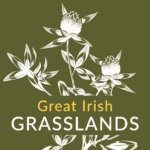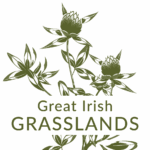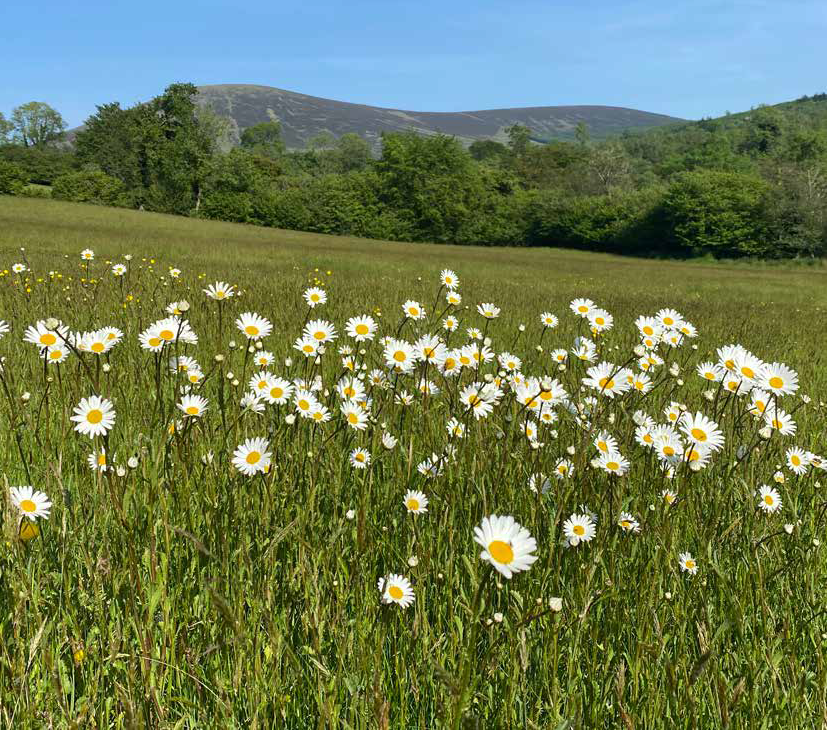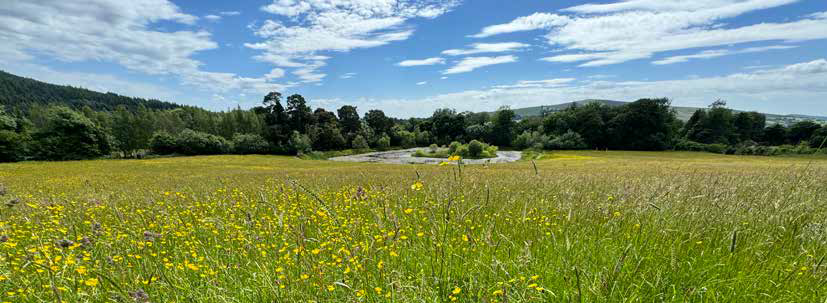The grasslands have been surveyed as part of the ACRES agrienvironment scheme and have proven to have a diverse range of plant species. Those recorded to date include Yellow-rattle, Goat’s-beard, Lady’s Bedstraw, Primrose, Cowslip, Common Sorrel, Sheep’s Sorrel, Kidney Vetch, hawk’s-beard, Cat’s-ear, Meadow Vetchling, Common Bird’s-foot-trefoil, Oxeye Daisy, Pignut, hawkweeds, Meadowsweet, Yarrow, Wild Angelica, White Clover, eyebright, Hogweed, stitchworts, Curled Dock, Ribwort Plantain, forget-me-nots, Selfheal, Bugle, Field Scabious, violets, Tufted Vetch, Devil’s-bit Scabious, Marsh Thistle, Meadow Thistle, Red Clover, Common Knapweed, Spear Thistle, Ragged-Robin, Bee Orchid, Wild Thyme and Cuckooflower. Species recorded in the wet grassland include Grass-of-Parnassus, Marshmarigold, Marsh Pennywort, woodrush, mints, lousewort and Hempagrimony. These areas also support a breeding population of the protected Marsh Fritillary butterfly.
The meadows are a hive of activity from early summer with lots of bees, butterflies, grasshoppers and moths, including the Six-spot Burnet and the Hummingbird Hawk-moth. Many species of birds have also been recorded including Curlew, Barn Owl, Woodpecker, Goldfinch and Skylark.



